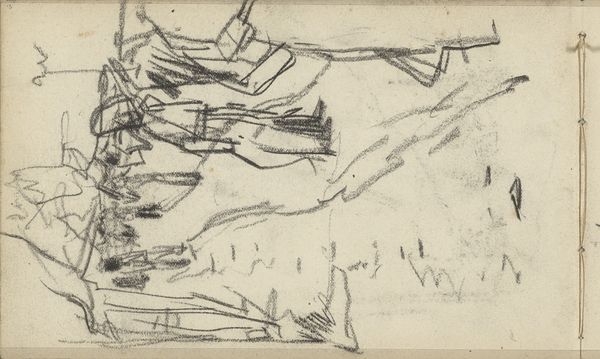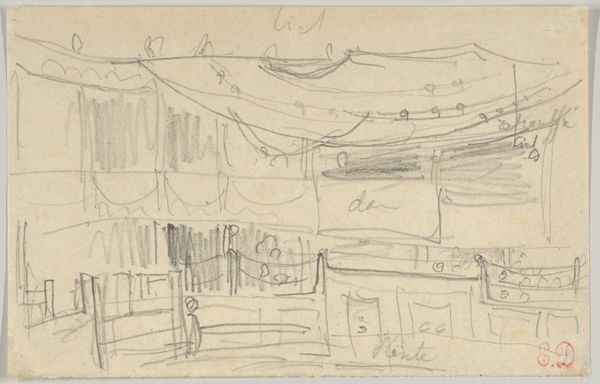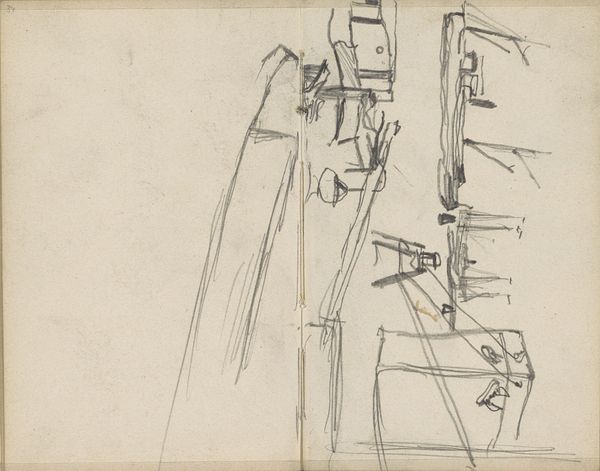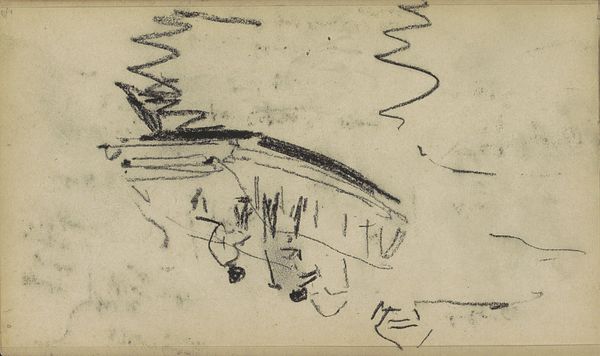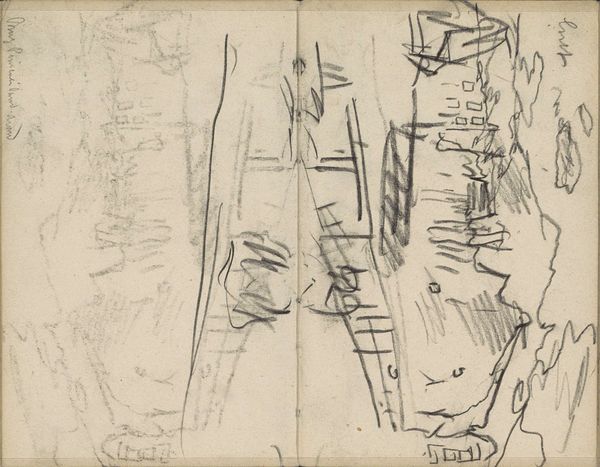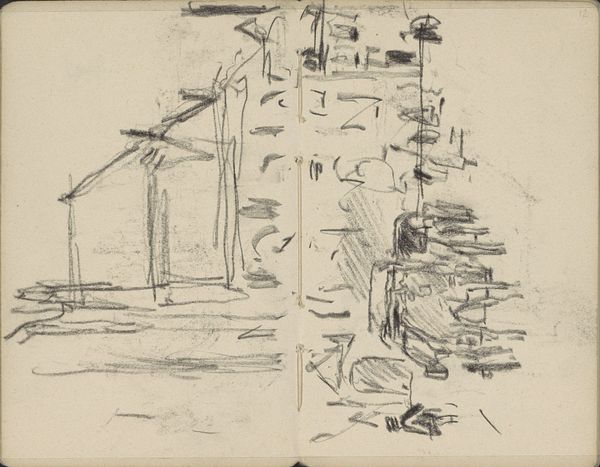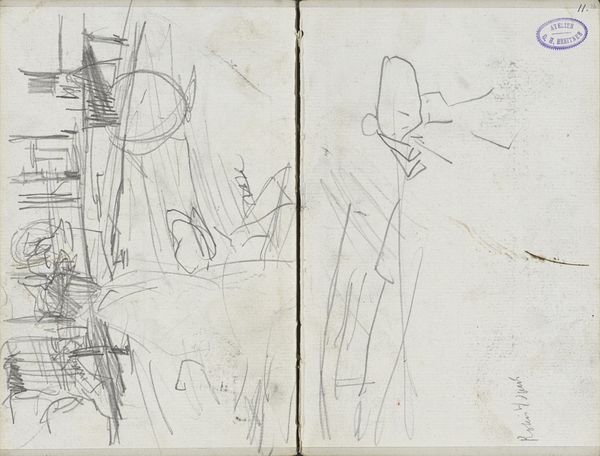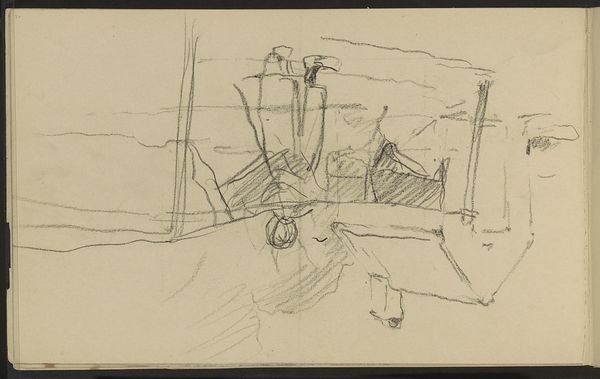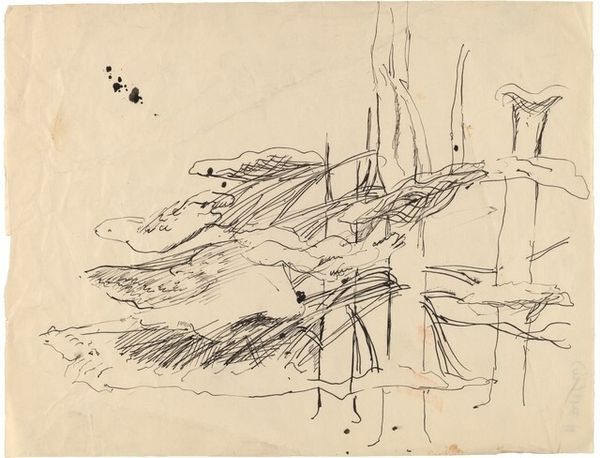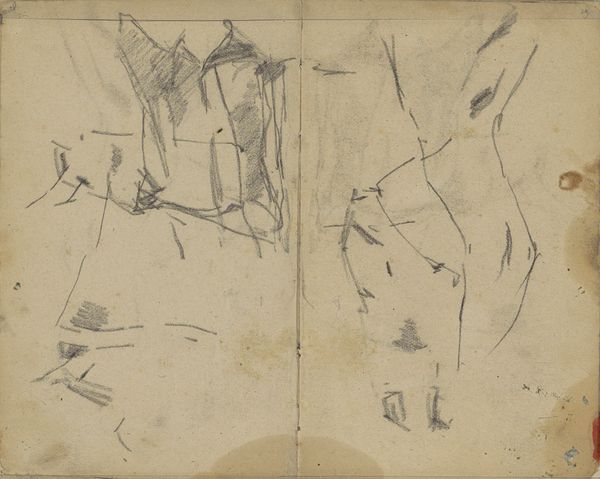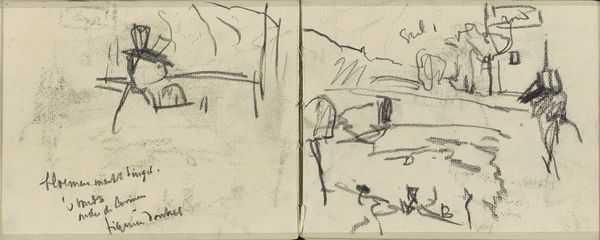
cardboard, drawing, ink, indian-ink
#
cardboard
#
17_20th-century
#
drawing
#
toned paper
#
quirky sketch
#
sketch book
#
incomplete sketchy
#
german-expressionism
#
personal sketchbook
#
ink
#
german
#
sketchwork
#
ink drawing experimentation
#
detailed observational sketch
#
sketch
#
indian-ink
#
expressionism
#
sketchbook drawing
#
cityscape
#
sketchbook art
Copyright: Public Domain
Curator: Kirchner's "Westhafen Frankfurt am Main," circa 1916, a swift rendering in ink on cardboard, strikes me with a palpable sense of anxious energy. The composition feels off-kilter, urgent, even. Editor: Those rapid lines—it's like a visual tremor, isn’t it? They perfectly capture the unease of pre-war Germany. The docklands were crucial economic engines, but here they are sketched as precarious, almost chaotic. Curator: Precisely. The location of Frankfurt, its Westhafen, wasn’t merely a site of trade. As a cityscape, it signifies progress, yet Kirchner distorts that notion. The scene is rendered unstable by Expressionism, the figures diminished by industry. Are those silhouetted figures near the base walking towards us? Is that forward or onward progression or a sign that war, conflict, death marches upon all those whom Kirchner sees in the distance, beyond this page, in that time? Editor: And what are those masts supposed to be signifying? And think about what boats and bodies of water signify as motifs. There’s something profound in the use of water as a reflective tool—in visual arts it invites the viewer to think about the cultural mirror this drawing offers, of Germany at the time. Curator: Absolutely. Consider that Kirchner himself suffered a mental breakdown around this period. He volunteered for military service, only to be discharged. "Westhafen Frankfurt am Main" serves as both objective document and subjective experience of trauma that also allows viewers a chance to have insight to the social, racial and colonial violence. The way he represents these elements also represents German modernism that still has a relationship to the legacies of colonial violence as a historical, institutional structure. Editor: Right, so you have these visual cues or remnants from German colonialism and then his life crumbling during World War One. No wonder the piece feels disjointed; you can see that torment manifested on that surface, literally at its edges. Curator: So, what at first glance seems like an ordinary ink sketch transforms into a powerful symbol. Editor: It is also evidence of that very historical weight and personal history! Thanks for walking us through that!
Comments
No comments
Be the first to comment and join the conversation on the ultimate creative platform.
